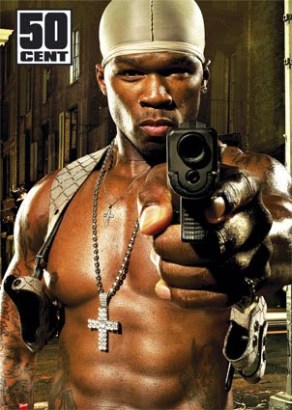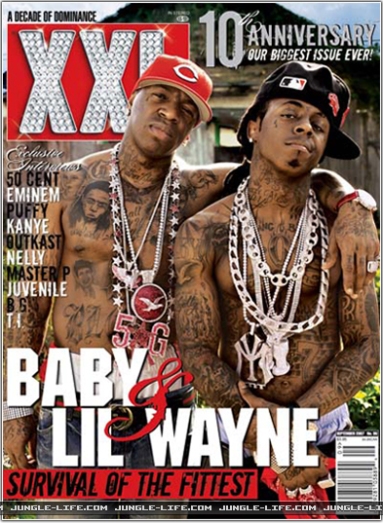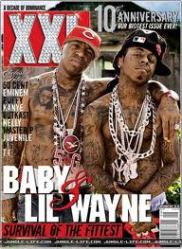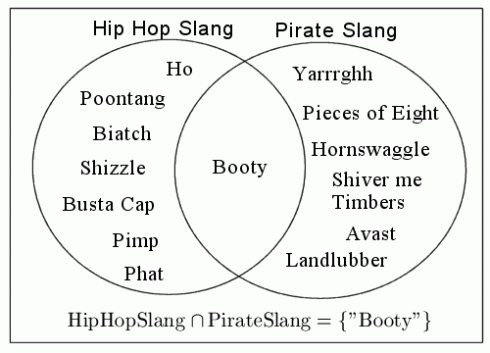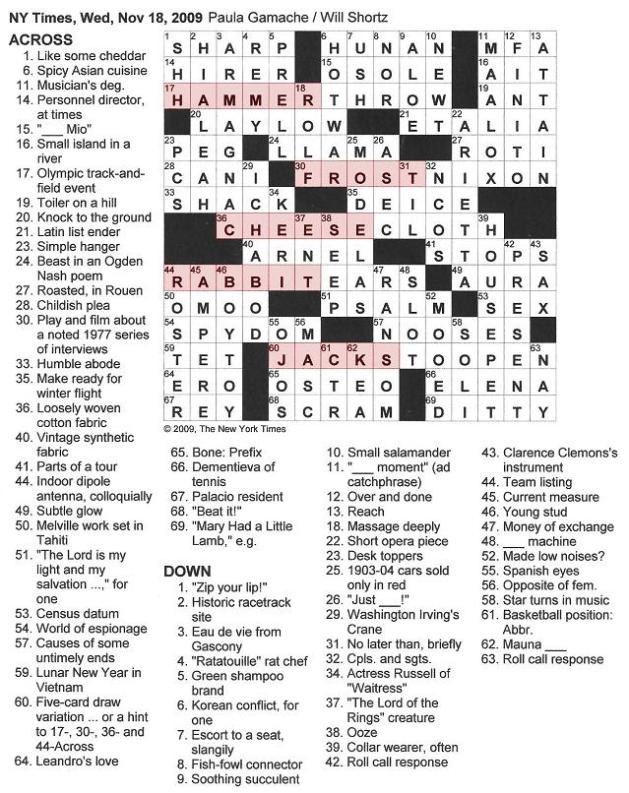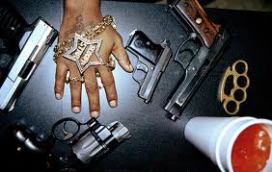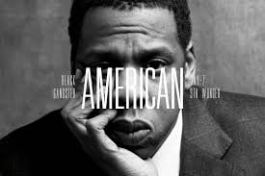Ousmane Diallo
Pas 368
Professor Ratcliff
Semiotics in Hip Hop Culture
Does semiotics play a major role in the culture of Hip Hop? Absolutely, Hip Hop culture is being presented to the public through usage of semiotics in the media. Morgado writes that “semiotics is a philosophy, a body of theory, and an assortment of methods that deal with the study of signs and how they work (p.134).” This suggests that signs or symbols have an attached meaning that serves as an operation for people. Society develops meanings for signs and uses it as a way to notify individuals how they should or should not conduct themselves in everyday life. As a result, Semiotics takes on different roles in Hip Hop and influences individuals overall sense of identity. The dominant signs of semiotics in Hip Hop are guns, women, financial wealth, and thug imagery (Donnelly, Hip-Hop Music and Gender Stereotypes slides). The media insists on using semiotics as tools to perpetuate negative stereotypes in Hip Hop culture in order to benefit the market of commerce.
Mass media is aiming to benefit off the advertising market associated with Hip Hop because heavy emphasis is placed on financial gain. This notion is illustrated by popular television stations selling their rights or ownerships to large corporations. For instance, the popular Hip Hop network BET (Black Entertainment Television) has recently undergone changes within the past decade due to relinquished rights of its former owner to a large corporation (Fabrikant, para.5). The original owner of BET was Robert L. Johnson and Viacom is currently the corporation that has legal rights over the network (Fabrikant, para.5). One may conclude Viacom did not take interest into BET until the network became widely known throughout the minority community and seen as a source of revenue. Fabrikant states that in the year of 1999 it was predicted to generate over two hundred million dollars because it was one of the top Black owned businesses (para.4). This program station was viewed as having the ability to boost sales through the number of individuals desiring to watch programs on this station. This network shows individuals in a negative light because it sparks the interests in the consumers that want to emulate these characters. Many of these shows incorporate sexualized women, violence and uneducated individuals that cause the viewers especially young viewers to become a mirror of these actions. This could be indication that Viacom is more interested in gaining profit than looking into promoting positive aspects of the Hip Hop culture. Positive aspects could be seen as providing entertainment that uplifts the target population rather than contributing to imagery that maybe potentially harmful to youth and other individuals.
High profiled corporations have the intentions of financially benefiting at the expense of others. These corporations are influencing the Hip Hop culture through media coverage using aspects of semiotics to control what is being marketed to the public. Talreja, Jhally & Patierno claims “communication is always linked with power and that those groups who wield power in a society influence what gets represented through the media (p.3).” In Hip Hop videos and magazines guns are commonly used to depict an image of strength, which is defined as a necessity for masculinity. Guns are seen as a requirement for masculinity because it is something that provides users with power or control. For instance, the images of guns are understood as a form of semiotics that represents masculinity in the Hip Hop culture. The audience that buys into this concept is simply trying to live up to the expectations being portrayed as important to their culture.
Text is an additional form of semiotics emphasized to stress the importance of masculinity within this particular culture. For example, Juaquin Malphurs is a fairly new and well-known rapper nick-named Waka Flocka Flame (http://artists.letssingit.com/). In song lyrics he often discusses usage of guns and violence towards people he is not fond of. This is a mainstream rapper that television stations like BET usually support by promoting albums and songs. The lyrics in his songs are filled with aggression and contribute to the idea of building hyper-masculinity, especially within minority communities. Donnelly states that Grealy (2008) claims “the explicit violence and aggression featured in rap lyrics plays a role in the increased violence in the streets between rap artists (Hip-Hop Music and Gender Stereotypes).” He goes on to write, “according to some studies, the highest concentration of rap listeners was found in areas with high crime rates (Donnelly, Hip-Hop Music and Gender Stereotypes slides).” The media is not only publicizing concepts that encourage violence because it is interesting to viewers, it is a source that generates sales. People that inspire to relate with Waka Flocka Flame and similar artists are being controlled by concepts of violence and gun usage, primarily because it is shown as appropriate methods to building a masculine identity. Studies show that masculinity is an important factor within different ethnic groups, including African Americans and Hispanics (Roberts, pgs. 379- 390; Parrillo, p.386). Therefore, most things associated with building a masculine identity for minorities or those most involved with Hip Hop culture will be popular. Unfortunately the actions and representations of these artists reflect a concept of American society that revolves around masculine identity. Many artists are conditioned to focus on individualism and competition therefore resulting into another negative product of America.
Another dominant reflection of semiotics is the labels that are attached to women. In Hip Hop women are usually described in terms that degrade their self-worth, oftentimes reducing their identity to sexual objects. Donnelly writes that Leopard (2007) argues, “Women are portrayed as commodities in many forms of rap music (Hip-Hop Music and Gender Stereotypes).”In various rap and R&B lyrics of popular musicians women are described with a function of being reduced to commodities. For instance, both male and female artists tend to use slang terms that degrade women such as “money makers” or “gold diggers,” which denotes an inability to function in society separate from sexual objectification. These common slang terms perpetuate stereotypes of women involved in Hip Hop. Women are also viewed as sexual objects within communities that support the Hip Hop culture because they are encouraged to wear less clothing in the outlets of media. The outlets of media include: magazines, internet sites, and film. This allows audience to pick up on the messages illustrating what it means to be considered flattering or reflection of this culture. When the media exposes the public to these forms of semiotics it reinforces negative stereotypes about women in this culture. Many young girls have this idea of being these women in magazines and television in order to appeal to men. They use their bodies instead of their minds to advance in life, which perpetuates a cycle of uneducated women in the Hip-Hop population. Large corporations that have ownership of media access are more inclined to weigh their costs and benefits rather that the price these young ladies pay in the future. There is a financial benefit associated with displaying these stereotypes and it outweighs the cost of harming women’s sense of self-worth.
Financial wealth is another dominant sign of semiotics placed in the Hip Hop culture. This category paints a picture of what it means to have access to luxury. Mortelmans asserts that “luxury is defined as a specific kind of sign value, produced in specific narratives and
used in processes of stratification (p.497).” This statement suggests that luxury can be interpreted differently by individuals depending on where they live or their cultural context. Hip Hop is a culture in itself and provides a definition of luxury, which is monetary gain. The images that are perpeturated are that people can have bundles of cash when they become a part of the industry. Rappers are shown in music videos flashing money and buying fancy items. This image of luxury contributes to the sterotype that minorities are only able to get rich fast by being in some type of entertainment industry. Donnelly says Kaplan (2008) believes “rap music and videos flash images of cars and other material goods as to proclaim status and or wealth. This in turn suggests to the audience that such material things are essential for hip hop crediability. Young listeners in low socioeconimic sectors are particularily suceptible to this symbolism (Hip-Hop Music and Gender Stereotypes).” The media is able to successfully obtain profit off this perpeturated sterotype in Hip Hip because people tune into their televisions daily, buy magazines, and other sources to find the lastest information on the culture.
The concept of thug life suggests to viewers that image is important to lifestyles. This particular symbol goes in hand with the building a style or dress code. The thug image consists of oversized t-shirts, baggy pants, gold chains and body tattoos ranging from facial to lower body. This image is derived from the prison industrial complex that many men fall victim to. In the prison arena men have to use their body or physical strength to prove dominance over other men. The type of attire and tattoos indicate their unwillingness to conform and to contest the higher authorities. There are constant images flashed throughout the media of individuals dressing like “thugs” or “gangstas.” This image encourages people to go out and buy clothing or material that they see in the media. However, the image of thug life can hinder opportunities for people within the community, especially when it comes to employment. For instance, a person will be less likely to land a high paying office job when he or she walks into an interview dressed as a thug. There are fewer images of people in the Hip Hop industry that wear suits and ties. This example indicates that semiotics is used by mass media as a tool to persuade the audience to promote commerce, being that public consumption of materials or products financially benefit large corporations. The symbols associated with the thug image assist in advertising and persuade the urban community to spend their income instead of saving for future investment. The media and corporations are more concerned with earnings than the preservation of culture because it places value on things that will sell despite the harmful effects it may have on individuals.
Information presented in the Hip Hop culture also affects people’s ability to develop and reinforce insights of personal culture. Corporations and the advertising industry restrict individuals to a certain amount of information when they decide what is presented to the public. As a result of limiting information to the public, communities are being negatively impacted. These communities are faced with a dilemma because they no longer have complete control over their cultural capital. According to Thompson, cultural capital falls in line with people having the ability to construct their own values, skills, and means for interactions with others inside their communities (pgs. 394-412). Taylor writes “in the past few years it has become commonplace for workers in the advertising industry to use the phrase convergence of content and commerce to describe the increased role that advertising plays in the production of popular culture in the United States (p. 405).” Taylor’s statement suggests that original culture can be affected by the marketing industry because it has the ability to persuade people to buy into information distributed, which may cause individuals to lose direct connection with their main sense of beliefs or traditions. The dominant signs of semiotics are the main source of information that gets passed along through the media. Stereotypes become prevalent when individuals have less control of what is being presented about their culture.
The stereotypes that is passed around in the Hip Hop media not only impacts cultural capital, it affects social capital throughout neighborhoods as well. Putnam argues that social capital is the networks that people build and maintain in communities, obtained through social interaction (pgs. 1-9). Putnam calls this concept of interacting and building strong ties in the community civic engagement (pgs. 1-9). He believes that social capital is a necessity to the health of communities (Putnam, pgs. 1-9). This particular capital is impacted by the messages pushed in Hip Hop media because individualism is promoted more than civic engagement. For instance, the dominant sign of semiotics known as financial wealth encourage audiences to work by themselves to achieve this portion of success. People that feed off the media’s perception of luxury tend to follow what they see in the coverage, and in this case they will be less likely to believe they need someone else’s help to reach success with wealth.
There are both pros and cons to semiotics and its use in media. Consequently, the harmful effects overshadow the positive representations due to the financial market pitching to its consumers on what is wrong, right and the direction one should take in one’s decisions. From a business perspective it can be seen as beneficial to the media corporation without any responsibility to reflect upon. Nonetheless that type of mentality has allowed the most ethical individuals to accept what they are doing without the consideration of the effect on its audience or the people of the urban and affluent society. The distinction between commerce and culture is evident when people become cognizant of how Semiotics is used as a tool to persuade and inform individuals on what Hip Hop is now and what it was back in the Bronx of New York in the 1970’s. One should consider the fifth element of Hip Hop, which is Knowledge to somehow decipher and use Semiotics, as a tool to assist one’s self when the media distributes the Hip Hop entertainment of the present.
Works Cited
Morgado, Marcia. “The Semiotics of Extraordinary Dress: A Structural Analysis and Interpretation of Hip-Hop Style.” Clothing and Textiles Research Journal, 25.2 (2007): 131-155.
Donnelly, Mike. “Hip-Hop Music and Gender Stereotypes: A Semiotic Analysis of Masculinity in Hip Hop.” 28, April 2010. Web. Retrieved from: http://prezi.com/gdgef4rrjfir/hip-hop-and-gender-stereotypes/
Fabrikant, Geraldine. “BET Holdings to Be Bought By Viacom for $2.34 Billion.” Nytimes.com. N.p., 4 Nov. 2000. Web.
Mortelmans, Dimitri. “Sign Values In Processes Of Distinction: The Concept Of Luxury.” Semiotica 157.1-4 (n.d.): 497-520. SocINDEX with Full Text. Web.
Parrillo, Vincent. Strangers to these Shores: Race and Ethnic Relations in the United States, Ninth Edition. Boston, MA: Pearson Education Inc, 2009. Print.
Patierno, Mary; Jhally, Sut; & Talreja, Sanjay. “ Stuart Hall Representation and The Media.” (2005). Retrieved from: http://www.mediaed.org/assets/products/409/transcript_409.pdf
Putnam, Robert D. “Bowling Alone: America’s Declining Social Capital. Journal of Democracy, Vol.6, No. 1(1995) 65-78. Pgs. 1-9. Web.
Roberts, George W. “Brother to Brother: African American Modes of Relating Among Men.” Journal of Black Studies, Vol. 24, No. 4 (Jun., 1994): pp. 379-390. Web.
Taylor, Timothy D. “Advertising And The Conquest Of Culture.” Social Semiotics 19.4 (2009): 405-425. SocINDEX with Full Text. Web
Thompson, George D. “Cultural Capital And Accounting.” Accounting, Auditing & Accountability Journal 12.4 (n.d.): 394-412. SocINDEX with Full Text. Web.
“Waka Flocka Flame – Biography.” LetsSingIt. N.p., n.d. Web.
Retrieved from: http://artists.letssingit.com/waka-flocka-flame-rkf4b/biography

